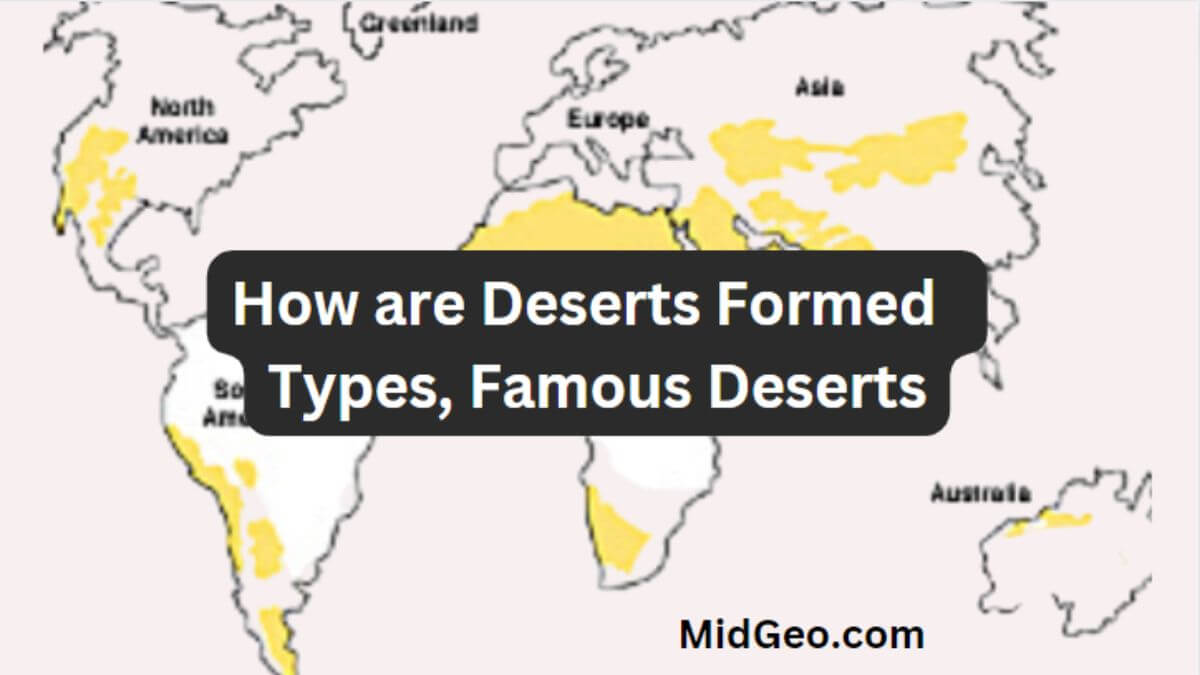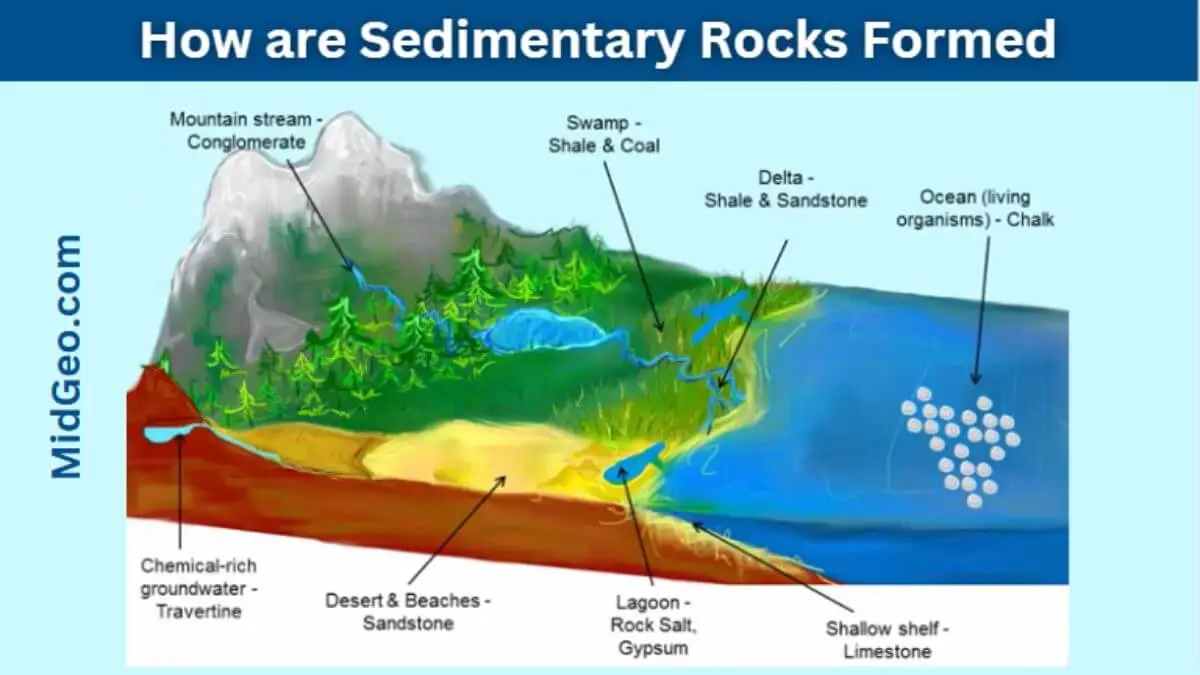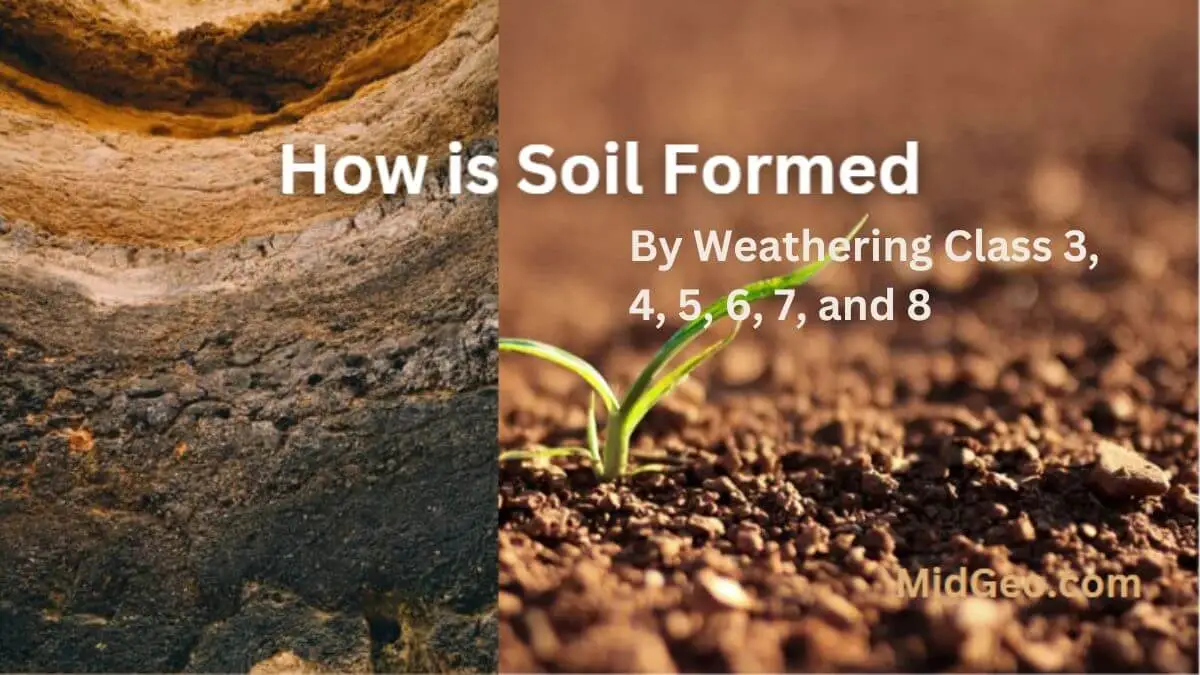
Have you ever wondered How are Deserts formed? Deserts are among the most fascinating and unique ecosystems on the planet. They cover over one-third of the Earth’s surface and are characterized by their arid, dry landscapes.
In this article, we will explore how deserts are formed, why they form where they do, and the different types of deserts that exist. We will also take a closer look at the formation of sand deserts and hot deserts, as well as some famous deserts from around the world.
How are Deserts Formed?
Deserts are formed through a combination of climate, geology, and geography. Most deserts are located in regions where there is little rainfall, and the temperature is high.
The hot and dry air causes water to evaporate quickly, leaving the land dry and barren. Geology also plays a role in the formation of deserts.
- How Hills and Mountains Are Formed Where Are Mountains Found
- How are Estuaries Formed? Types of Estuaries
- How Was Death Valley Formed
- How Are Sand Dunes Formed
- How Are sinkholes formed
- How Waterfalls Are Formed
- How Lakes Are Formed
- How Are Glaciers Formed
- How Are Guyots Formed
The movement of tectonic plates can create mountain ranges that block moisture from reaching certain regions, resulting in desertification. The wind and water erosion of soil can also lead to desertification.
Geography can also contribute to the formation of deserts. Regions that are far from large bodies of water experience less rainfall, leading to desertification.
5 Types of Deserts

Deserts are not all the same. There are 5 main types of deserts:, each with unique characteristics and climate patterns:
- Hot and dry deserts: These are the most common types of deserts, and they are found in regions close to the equator. The Sahara Desert in Africa and the Mojave Desert in the southwestern United States are examples of hot and dry deserts.
- Semi-arid deserts: These deserts have slightly more precipitation than hot and dry deserts, but still have long dry seasons. The Sonoran Desert in North America is a semi-arid desert.
- Coastal deserts: These deserts are found near coastal regions and are influenced by cold ocean currents. The Atacama Desert in South America is a coastal desert.
- Cold deserts: These deserts are found in polar regions and are characterized by long, harsh winters. The Gobi Desert in Mongolia and China is a cold desert.
- Sand deserts: These deserts are characterized by their vast expanses of sand dunes. The Sahara Desert and the Arabian Desert are examples of sand deserts.
Why do deserts form where they do?
Deserts form in areas where there is little rainfall and high evaporation rates. Most deserts are found near the tropics, where warm air rises and creates high-pressure zones that inhibit the formation of clouds.
Cold ocean currents can also create coastal deserts by reducing the amount of moisture in the air. Other factors that can contribute to the formation of deserts include the presence of mountain ranges, which block moisture from reaching certain regions, and the presence of continental interiors, which experience extreme temperatures and little rainfall.
Rainfall, leading to desertification. Additionally, climate change is exacerbating desertification, as rising temperatures and changes in precipitation patterns are leading to more severe and frequent droughts in many regions.
How are Hot Deserts Formed?
Hot deserts are formed in regions where the temperature is high and there is little rainfall. These regions are typically found near the equator, where warm air rises and creates high-pressure zones that inhibit the formation of clouds.
The high temperature causes water to evaporate quickly, leaving the land dry and barren. The movement of tectonic plates can also create hot deserts by creating mountain ranges that block moisture from reaching certain regions. Additionally, the wind and water erosion of soil can contribute to desertification.
How are Sand Deserts Formed?
Sand deserts are formed through a combination of wind erosion and the deposition of sand particles. Wind erosion occurs when strong winds blow over exposed rocks, breaking them down into smaller particles. These particles are then carried by the wind and deposited in other areas. Over time, these particles accumulate, forming sand dunes.
Where Do Deserts Form?
Deserts can form in a variety of regions, including those that are far from large bodies of water, regions that experience drought or have low rainfall, and regions that are affected by tectonic activity or wind erosion. Most deserts are found in regions close to the equator, where warm air rises and creates high-pressure zones that inhibit the formation of clouds. Coastal regions affected by cold ocean currents can also create deserts by reducing the amount of moisture in the air.
Famous Deserts
Deserts are found on every continent and are home to unique plant and animal species, as well as indigenous communities that have adapted to the harsh environment. Some famous deserts include:
- Sahara Desert: Located in North Africa, the Sahara is the largest hot desert in the world and covers over 3.6 million square miles.
- Mojave Desert: Located in the southwestern United States, the Mojave is a hot and dry desert that is home to unique plant and animal species, such as the Joshua tree.
- Gobi Desert: Located in Mongolia and China, the Gobi is a cold desert that is home to a variety of wildlife, such as the Bactrian camel and the snow leopard.
- Atacama Desert: Located in South America, the Atacama is a coastal desert that is known for its extreme aridity and unique geological formations.
- The Best Step By Step Guide How Are Guyots Formed – Landform
- How Are Glaciers Formed? Fun Facts About Glaciers?
- How Lakes Are Formed? Facts About Lakes In The World
- Landforms of fluvial erosion and deposition – River Systems
- What are Landforms? Substantial Types of Landforms, Formation, Example
However, Deserts are fascinating and unique ecosystems that are formed through a combination of climate, geology, and geography. Understanding how deserts are formed and why they form where they do is critical for addressing environmental issues, such as desertification and climate change.
By taking action to mitigate the effects of climate change and protect desert ecosystems, we can ensure that these valuable environments continue to thrive for generations to come.





